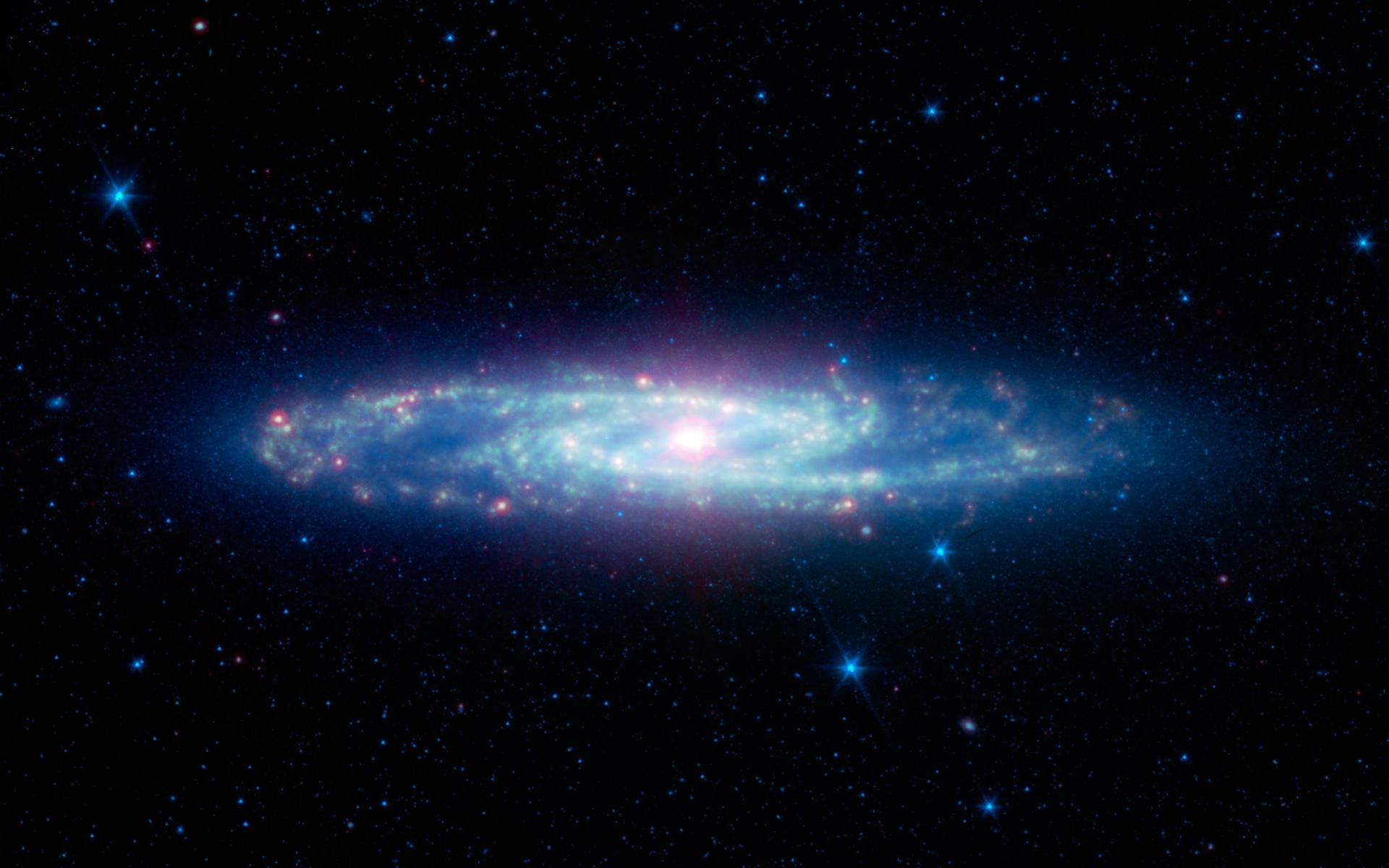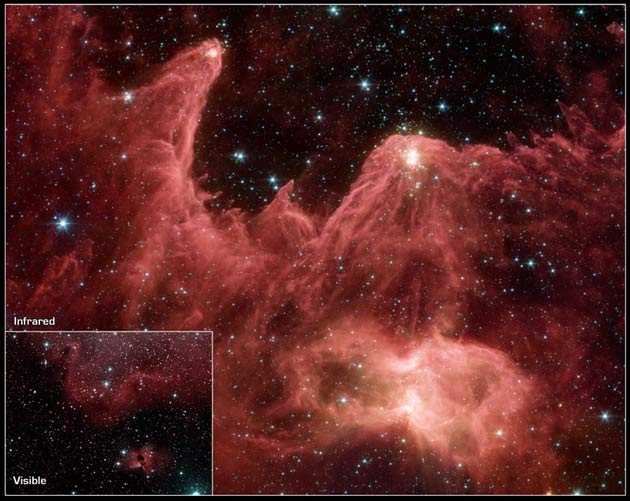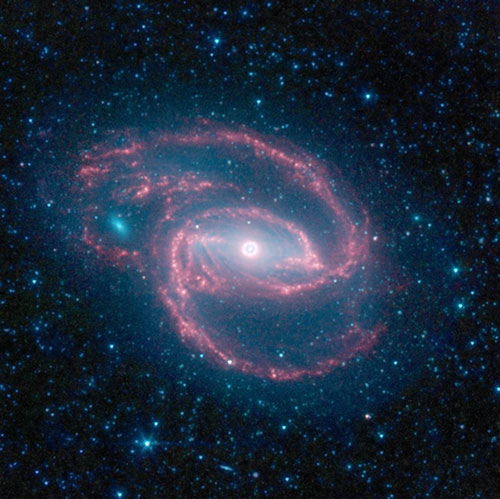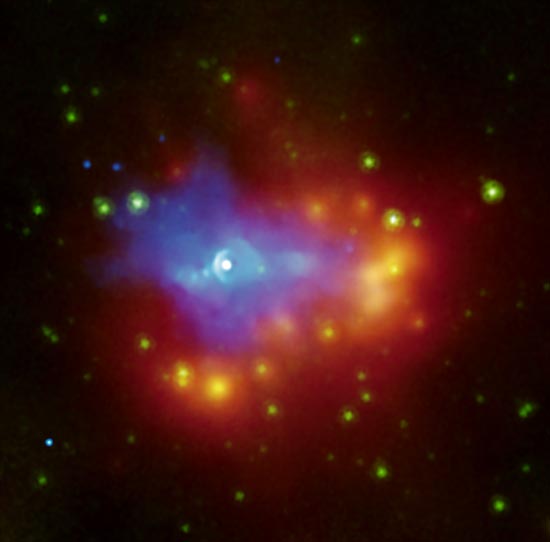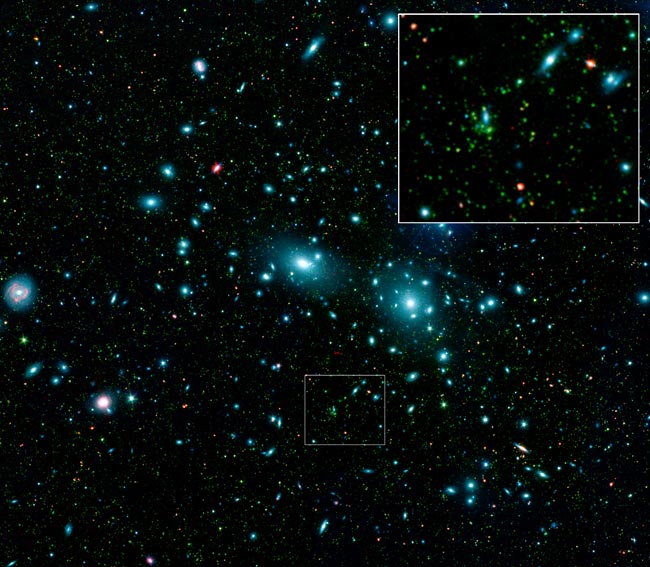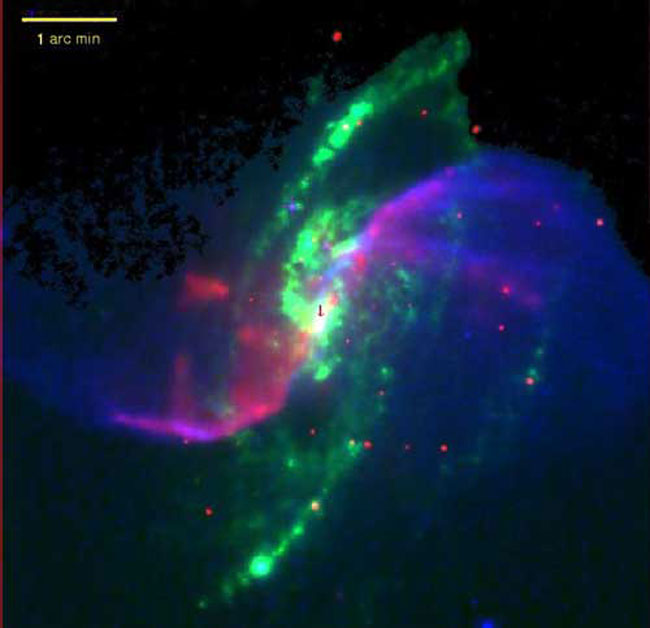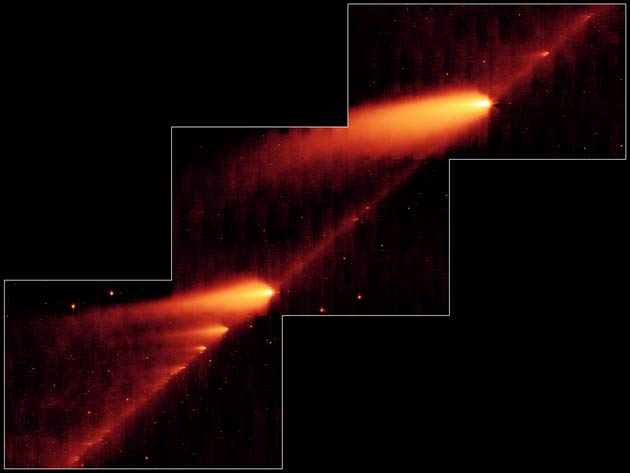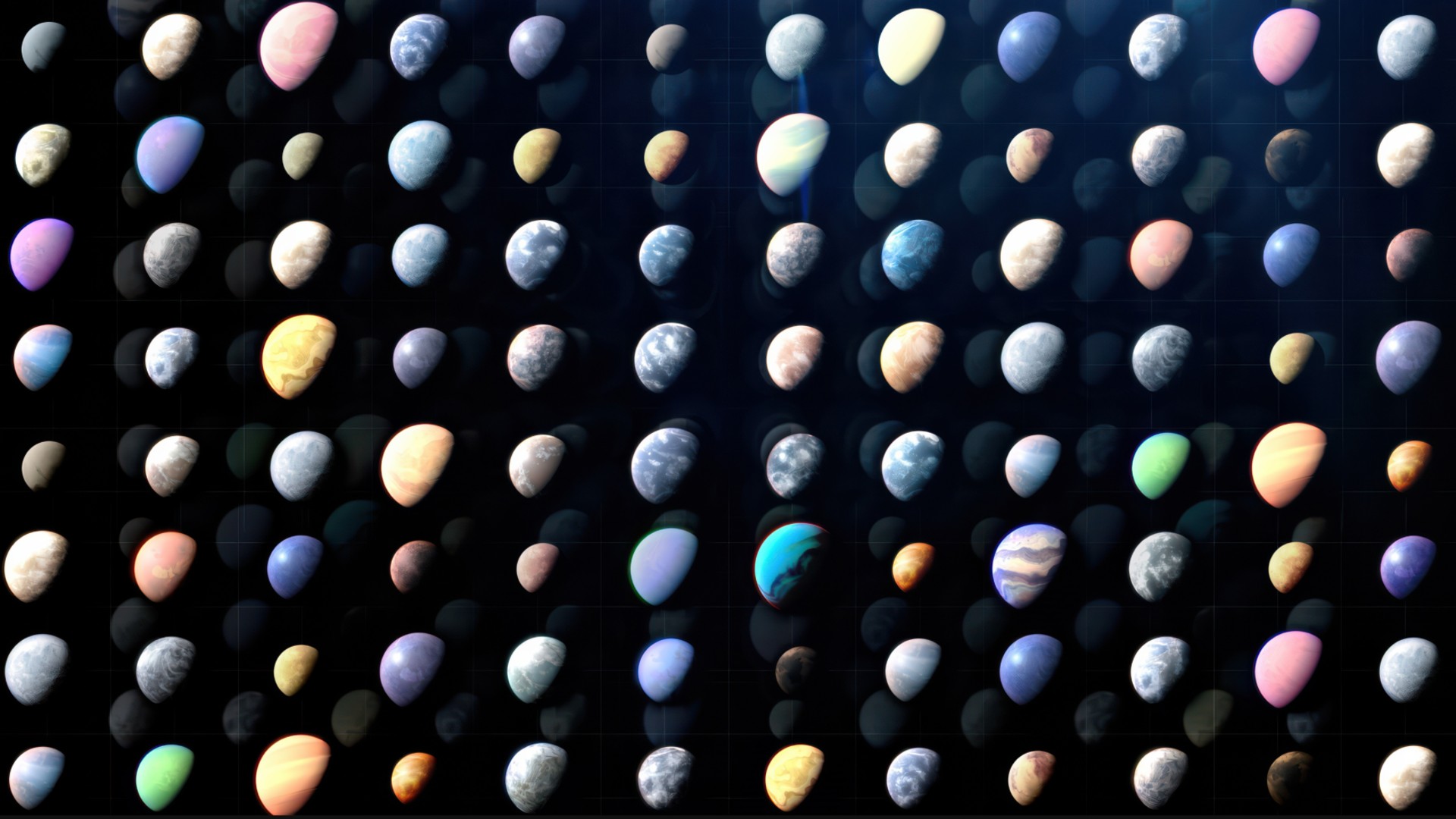Gallery: The infrared universe seen by NASA's Spitzer Space Telescope
Suprisingly Neat & Tidy Star Explosion
Stars don't always rip apart in violent explosions. Some blow up in an orderly fashion. A star named Cassiopeia A blew up in such a tidy manner that it retained much of its original onion-like layering. In this false-color image taken by Spitzer, blue glow around Cas A is material heated by forward shock wave. Green, yellow and red is material heated by reverse wave.
Full Story: Star Explosion is Suprisingly Neat & Tidy
Sculptor Galaxy
The spectacular swirling arms and central bar of the Sculptor galaxy are revealed in this image from NASA's Spitzer Space Telescope, released in 2013. This image is an infrared composite combining data from two of Spitzer's detectors taken during its early cold, or cryogenic, mission. Also known as NGC 253, the Sculptor galaxy is part of a cluster of galaxies visible to observers in the Southern Hemisphere.
Related: The Barred Sculptor Galaxy Wallpaper
Barred Spiral Galaxy NGC 5746
The nearly edge-on galaxy NGC 5746 is partially obscured in visible-light photographs, making accurate classification impossible. This image from the Spitzer Space Telescope reveals the galaxy's true nature, showing a dramatic ring of warm dust surrounding the galaxy's bright nucleus.
Full Story: Spitzer Telescope Warms Up to Its New Mission
'Mountains of Creation'
The image composite compares an infrared image taken by NASA's Spitzer Space Telescope to a visible-light picture of the same region (inset). While the infrared view, dubbed "Mountains of Creation," reveals towering pillars of dust aglow with the light of embryonic stars (white/yellow), the visible-light view shows dark, barely-visible pillars. The added detail in the Spitzer image reveals a dynamic region in the process of evolving and creating new stellar life.
Breaking space news, the latest updates on rocket launches, skywatching events and more!
Black Hole in a Cosmic Storm
The "eye" at the center of the barred spiral galaxy NGC 1097 is caused by a monstrous black hole, which can't be seen but is surrounded by a ring of stars and rampant star birth. In a color-coded infrared view from NASA's Spitzer Space Telescope, the area around the invisible black hole is blue and the ring of stars is white.
Full Story: Black Hole Creates Eye in Middle of Cosmic Storm
Stellar Fireworks
Astronomers using the Spitzer Space Telescope traced the source of mysterious high-energy X-rays and gamma rays in space to a little known star cluster in the Milky Way. This infrared image shows the region in the Scutum constellation where a massive star cluster containing red supergiants (inset) was discovered.
Full Story: Source of Space Fireworks Discovered
A Stellar Corpse
This image from NASA's Spitzer Space Telescope and Chandra X-ray Observatory shows the dusty remains of a collapsed star. The composite image of G54.1+0.3 shows X-rays from Chandra in blue, and data from Spitzer in green (shorter wavelength infrared) and red-yellow (longer wavelength infrared). Scientists think that a pulsar (the white source in the center) is sending off a wind that is heating up remnant supernova dust.
Full Story: Star's Corpse Illuminated by High-Energy Wind
Spitzer Finds Thousands of Galaxies
A false-color mosaic of the Coma cluster released in 2007 reveals thousands of new faint objects (green), many of which belong to the cluster. The mosaic combines visible-light data from the Sloan Digital Sky Survey (color coded blue) with long- and short-wavelength infrared views (red and green, respectively) from NASA's Spitzer Space Telescope.
Full Story: Astronomers Find Thousands of New Galaxies
Spitzer Cracks a Galactic Mystery
Scientists using the Spitzer Space Telescope discovered the source of a galaxy's two extra, ghostly spiral arms that show up only in some telescope images, cracking a 45-year-old mystery. M106 (also known as NGC 4258), a stately spiral galaxy 23.5 million light-years away in the constellation Canes Venatici, appears in visible light images to have just two prominent arms emanating from its nucleus and spiraling outward.
Full Story: Galaxy's Ghostly Arms Finally Explained
Comet Breakup Points to Possible Meteor Shower in 2022
A detailed view of a crumbling comet will help astronomers figure out how strong a predicted meteor shower in 2022 will be. Comet 73P/Schwassman-Wachmann 3, or just SW-3, began fracturing in 1995. The breakup accelerated in 2016 as the comet again approached the sun, as it does every 5.3 years, and Spitzer returned an infrared image of the scene revealing three dozen chunks in addition to a broad stripe in the sky created by smaller pebbles and dust.
Full Story: Comet Breakup Points to Possible Meteor Shower in 2022
The Swan Nebula
NASA's Spitzer Space Telescope captured this infrared view of the choppy star-making cloud called M17, also known as the Omega Nebula or the Swan Nebula, in 2008.
Related: Swan Nebula 'star factory' reveals protostar treasure


Space.com is the premier source of space exploration, innovation and astronomy news, chronicling (and celebrating) humanity's ongoing expansion across the final frontier. Originally founded in 1999, Space.com is, and always has been, the passion of writers and editors who are space fans and also trained journalists. Our current news team consists of Editor-in-Chief Tariq Malik; Editor Hanneke Weitering, Senior Space Writer Mike Wall; Senior Writer Meghan Bartels; Senior Writer Chelsea Gohd, Senior Writer Tereza Pultarova and Staff Writer Alexander Cox, focusing on e-commerce. Senior Producer Steve Spaleta oversees our space videos, with Diana Whitcroft as our Social Media Editor.

